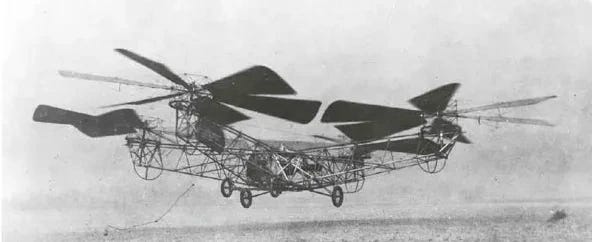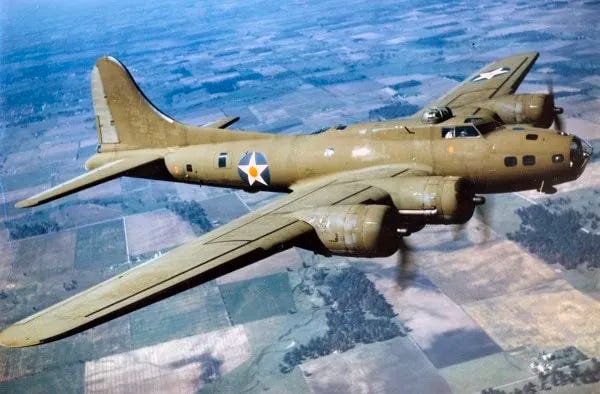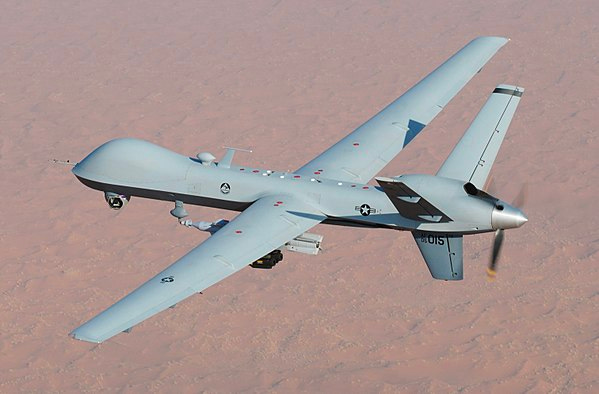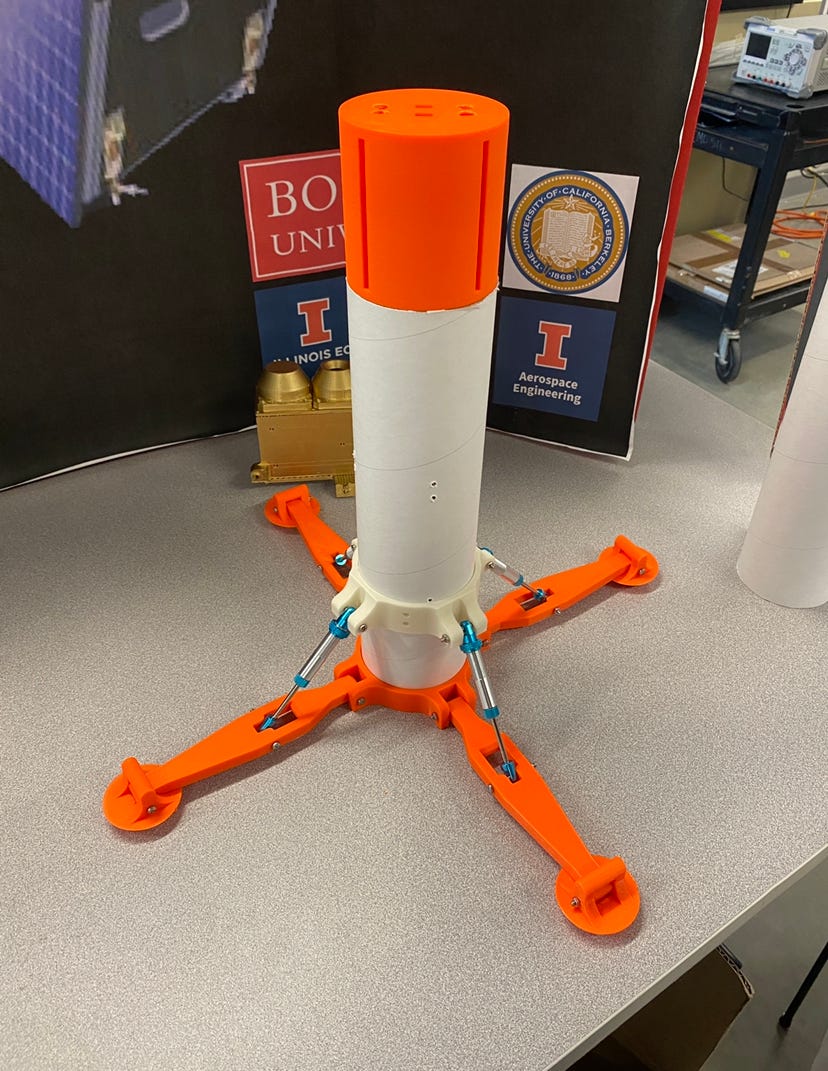Juan David's Newsletter - October 9th, 2022
The History of Drones from Bees and Military to FPV and Deliveries
Hello there,
Since school started, writing has been somewhat inconsistent for two reasons: it’s harder to sleep early (I usually write at around 6 AM) and Everything on Flying is a big project so once I lose momentum, it’s harder to pick it up again.
But by publishing today’s essay on the history of drones and by telling you that I will be building a self-landing rocket (see a picture at the end), I can get skin in the game and get back on track. Writing these essays is incredibly rewarding and I truly enjoy them so I must keep doing it!
October is here. Let’s get the most out of it!
The History of Drones from Bees and Military to FPV and Deliveries
This essay draft is part of an upcoming mega essay (or book) of an exploration of teaching myself EVERYTHING on Flying from Hidden History to Hardcore Engineering.
Before drones meant the little flying devices kids played around with, drones were (and still are) male honeybees. That’s where drones come from (or at least the word).
UAVs (unmanned autonomous vehicles) or drones have many shapes and uses, from recreational and photography to military and agriculture. The craziest use has to be drone racing, seriously. The thrust-to-weight ratio of those bad boys ranges from 4:1 to 11:11.
But I don’t think we have fully reached the limits of what drones can achieve. Food or product deliveries are fine, but there have to be greater limits to what we can achieve with this great power. As we take on this drone journey, let’s keep this question in mind.
What separates drones from other aircraft like a plane? No human pilot or passengers onboard.
This initiates a whole new development because if there are no aircraft pilots, different questions arise: How do you control the drone? Do you make it autonomous? How far can it go? What are its limits?
These are all questions we will cover in this section so let’s get ready.
You may think drones are a new invention, but not entirely. It goes way back!
The first drone probably started with the Montgolfier brothers with the creation of the first hot air balloon in the 1700s because they were the first folks to experiment with unmanned vehicles before going up.
Unmanned balloons were then used for war in the 1850s when the Austrians attacked the city of Venice, and the balloons were loaded with explosives. Balloon bombs were invented.
But for modern drones to exist, a lot of inventions needed to converge, such as radio development.
In 1898, Nikola Tesla operated a radio-controlled boat for a crowd in Madison Square Garden. The boat responded to signals and could flash its lights. Some of the audience thought Tesla was a magician, while others believed a trained monkey was inside the small boat.
This demonstration evolved into radio-controlled aircraft a few years later when the British developed the first RC (remote-controlled) aircraft, which they used for target practice. The Aerial Target became the first drone to fly under control in March 1917.
In 1920, the first quadcopter, Omnichen 2, was invented and flew for 360 meters, breaking the world record. Later that year, he flew for 1 kilometer.
This does not look that far from modern drones.
But even the word drone had not been used widely to call these unmanned vehicles. Then in 1935, the word “drone” was inspired by the Queen Bee military RC plane. Fun fact, a drone is a male honey bee, and they don’t have stingers.
Britain's Prime Minister, Winston Churchill, attended the drone's first flight. Although it looked like a plane, many considered it the first modern drone.
In 1938, the Good Brothers built the first successful model radio control airplane. Again, two brothers innovate in the aviation field. If you're thinking of having kids, consider having two boys or two girls close to each other in age because chances are they'll do something cool with planes.
Also, what a great picture. Walter’s face says it all.
We're getting close because we have radio-controlled airplanes, quadcopters, and a few other innovations. If you've been into drones for a bit, you would probably have heard the term FPV, which stands for first-person view.
The US Air Force and Boeing created the first FPV drone, the BQ-7. This was an older bomber plane that required a pilot to get close to the target, but once the pilot was ejected, the aircraft could be guided through an FPV system to the target.
At this time, helicopters were taking off, and people were looking for alternatives. Helicopters won the battle and became mainstream, but in an alternate future, quadcopters would have won. That's why in the mid-1900s, lots of quadcopters innovated was happening. In 1956, the Convertawings model A quadcopter was flown and had the excitement to take over the helicopter as the four-rotor system is way more efficient with fuel consumption and controllability.
So what happened? Why do we have helicopters and not quadcopters? The processing power at the time wasn't enough to control the four rotors simultaneously. Today, we have ESCs (Electronic Speed Controllers) that handle the speed of the motors.
And video so you can get to feel what it was like:
While quadcopters almost made it, RC planes definitely "made it." In the 1960s, model RC planes blew off in popularity, a boost that made today's development possible of commercial RC tech.
After the 1960s, the military took the "baton" and went full speed to continue developing the technology of drones even with highly classified programs. UAVs continued to be used in the Vietnam War, Yom Kippur War, the 1982 Lebanon War, and more.
Their success in combat made the United States Department of Defense interested in further technological development. The reason? UAVs showed cheaper, more capable fighting machines and no risk to aircrews.
In 1996, the famous Predator US drone was introduced, and you have probably seen this one already.
This drone became famous because of its in Afghanistan to launch missiles and search for Osama Bin Laden. This drone was like anything else, operating at an altitude of 25,000 ft, 740 km of range, and could fly for 40 hours.
Enter the 2000s, and the technology became even more mainstream; like many technologies, it started to come to the masses through, say it with me, COMMERCIALIZATION!
Therefore, in 2006, the first commercial drone permit was issued, and at the same time, a college student, Frank Wang, had an idea about using quadcopters. The company is called DJI. This also started the first industrial uses, such as inspecting pipelines and spraying pesticides on farms.
This gave rise to the modern era of drones and what many people are familiar with seeing in the sky. This started in 2013 with the release of the DJI Phantom 1, which became the model for how consumer drones would look like.
In the same year, the potential uses of drones were attractive, and delivery companies such as Amazon, FedEx, and UPS started looking for ways to implement drones. Still, the battery life and regulation did not quite match their intentions.
DJI released Phantom 1 in 2013. Two years later, the Phantom 3 was released, and everyone loved it, becoming one of the best-selling consumer drones in history. The drone came with a camera, the ability to see the feed from your phone, a range of 5 km, and 23 minutes of battery life. The Phantom 3 still wasn't perfect, but it was the best choice at the time by far.
Consumer drones were doing well and started increasing the interest of many hobbyists, but more exciting stuff was also in the works. In 2016, Ehang, a tech company, developed the first autonomous passenger drone.
In the years to come, more drone companies emerged while DJI continued releasing more models, such as the first foldable consumer drone, the DJI Mavic Pro, and the first drone under 250 grams, the Mavic Mini. This continued to accelerate the interest in both the hobby and professional drone sectors.
In 2020, drones played a crucial role in the pandemic, helping with the delivery of medical supply deliveries, police work, and even firefighters started using them to find entry spots in buildings to avoid putting themselves in danger.
In the future, regulations will be somewhat eased, and the first delivery drones will be approved.
I expect delivery drones to be here before the end of 2030, consumer drones will get even cheaper with even more capabilities, and drones will be here to stay.
The technological acceleration of drones was and still is incredible. However, we still need to think harder about future uses and benefits that may backfire on us, such as security. The future of drones is as bright as the plane in the 1900s and 1910s. In the upcoming decades, we can only hope we get even farther.
To conclude, here are two fantastic infographics about the history of drones.
If you’re still curious, I’d recommend you read:
Some friends and I will be participating in a vertically landed rocket challenge. Here’s an early picture of the assembling process.
We need to put it together, write software, and launch it. This rocket is similar to SpaceX’s Falcon 9. Vertically landing rockets will be one of the things the 21st century will be remembered for yet few people recognize the greatness of this engineering masterpiece.
The 21st century will also be remembered for AI. A friend and I spent this week hacking away and we finished our first prototype. Want access? Reply to this email.
One last thing: software is everyfuckingwhere. Do not be afraid of it, learn it, and have fun with it. But don’t go become a CS major or take online courses, learn through cool projects. The algorithms and data structures will make more sense once you look back. In this way, you will learn faster, maybe do something useful, and have a lotttttttttt more fun.
Have a great night,
Juan David Campolargo
4000 g of thrust with a drone weighing 1000 g.
Thrust-to-weight (TWR) ratio = 4000/1000 = 4:1
















